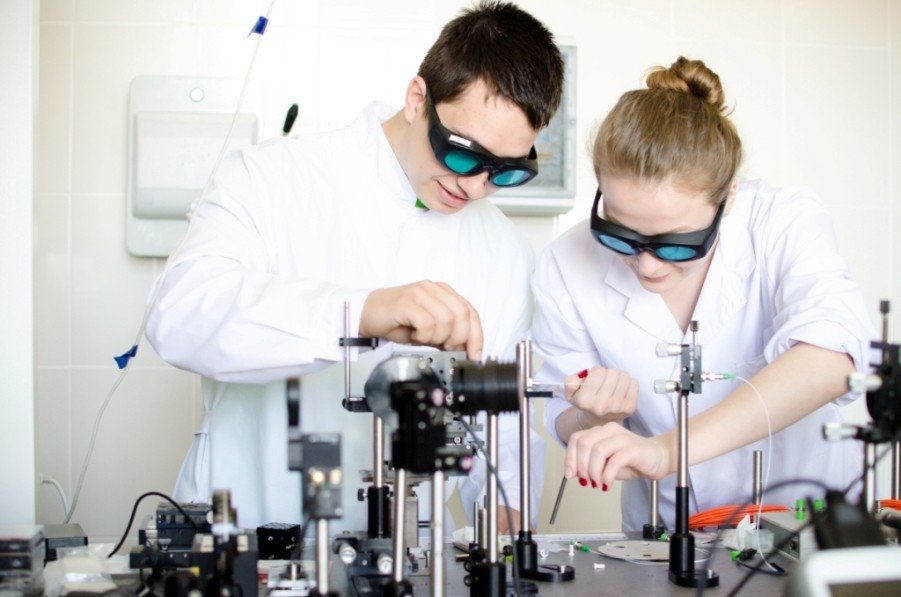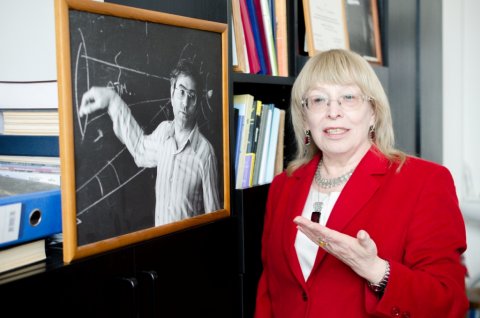Five years ago at South Ural State University, the Laboratory of Physical Research was founded. The goal of this laboratory was to give university researchers and postgraduates a chance to complete fundamental and applied research on modern experimental equipment and to give students a chance to completely master physical research methods. The infrastructure of the laboratory is unique – it includes several research spaces with innovative, expensive equipment, which have no match in the Ural region. The dean of the Faculty of Physics of the SUSU Institute of Natural Sciences, head of the Department of Optoinformatics, professor Nataliya Kundikova, heads the laboratory.
Metallurgy is the strongest industrial field in the Chelyabinsk region. Research in the area of condensed matter physics is traditionally one of the most in-demand in the Ural region. The equipment offered in the Laboratory of Physical Research at SUSU allows them to complete this research, including the application of optical methods. The Laboratory of Physical Research consists of several laboratories.
.jpg)
.jpg)
“The core of the Laboratory of Microscopy and Ellipsometry is the microscope and ellipsometer, which enable study of surface structure,” says Nataliya Kundikova, “With the help of an ellipsometer we can study films of submicron thickness which are used, for example, for creating optical filters or mirrors. With the help of an ellipsometer we can determine the thickness of the film and the refractive index of the material from which the film was prepared. The application of thin films is nanotechnology, which is widely applied today in electronics and other industries. For example, I have glasses with lenses from photochromic material which gets darker in the bright sun, and the lenses can be covered with a filter prepared from several various films which don't allow ultraviolet light through, or I can apply a diamond-like film which will spare the lenses from damage. The films can be sprayed on or applied by various methods – their thickness, as a rule, is less than 1 micron. For comparison, the thickness of a hair is roughly 100 microns.”
Films can also be applied to metals. For example, to protect the surface of jewelry from the surrounding environment they are covered with a very thin film.
“In the Laboratory of Spectroscopy, you can work on dielectric or optical spectrometers. Optical spectrometers allow you to obtain a spectrum of absorption, that is, the dependence of absorption of a substance on wavelengths. Dielectric spectrometers give you the ability to measure the resistance of dielectrics at various temperatures and frequencies. In this laboratory there are both students and research staff working. The optical spectrometer is used in the academic process – students study the principles of its action with a professor and do measurements. On the dielectric spectrometer they complete research on liquid crystals and polymers, and it is used for demonstrating its principles of work to the students,” notes professor Kundikova.
Research that is no less interesting is completed at the Laboratory of Optical Nanoscopy, where they have a microscopic constructor, on which you can obtain an image with higher magnification than optical methods allow. The Laboratory of Modern Materials has two devices which, first of all, are used for researching the characteristics of metals. One of them is the dilatometer, which allows them to determine the coefficient of thermal expansion. The second is the profilometer, which allows them to see micron and submicron roughness on the surface of metals before and after processing with, for example, ions or plasma.
.jpg)
.jpg)
“The unique thing about the Laboratory of Interferometry is its total isolation from all outside soundwaves. This isolation is necessary for research in which interference (combination) of light beams is used,” explains Nataliya Dmitrievna, “If you combine two light beams, you obtain a striped structure, whose wave position depends on the path each of the light beams takes with an accuracy up to fractions of a wavelength, so the smallest vibration elements, optically, lead to movement of the interference image. Using interference methods, we can make a matrix of photonic crystals. In this case, three-dimensional interference patterns are 'imprinted' on the photosensitive material.”
Large-scale research by SUSU scientists completed in this laboratories have a mostly fundamental character, however their results can serve as the foundation for applied research.
“For the Laboratory of Photonics and Optoinformatics, we obtained a femtosecond laser with unique characteristics. Using this laser, you can complete both fundamental and applied research. The engineering company ElMetro is interested in this laser. Their products are widely known in both the Russian market and in the Eurasian Union. In physics, it is very important to be curious – after all, all of the great discoveries happen that way. It is irresistible curiosity plus perseverance and a desire to bring an idea to its logical conclusion,” says the head of the Laboratory of Physical Research.
Every person who comes to study in the Faculty of Physics at the Institute of Natural Sciences, notes Nataliya Dmitrievna, has the chance to both dive in to the world of formulas, master unique equipment, and do experiments with their own two hands, but also, at some point, become the only person in the world to have new knowledge.





